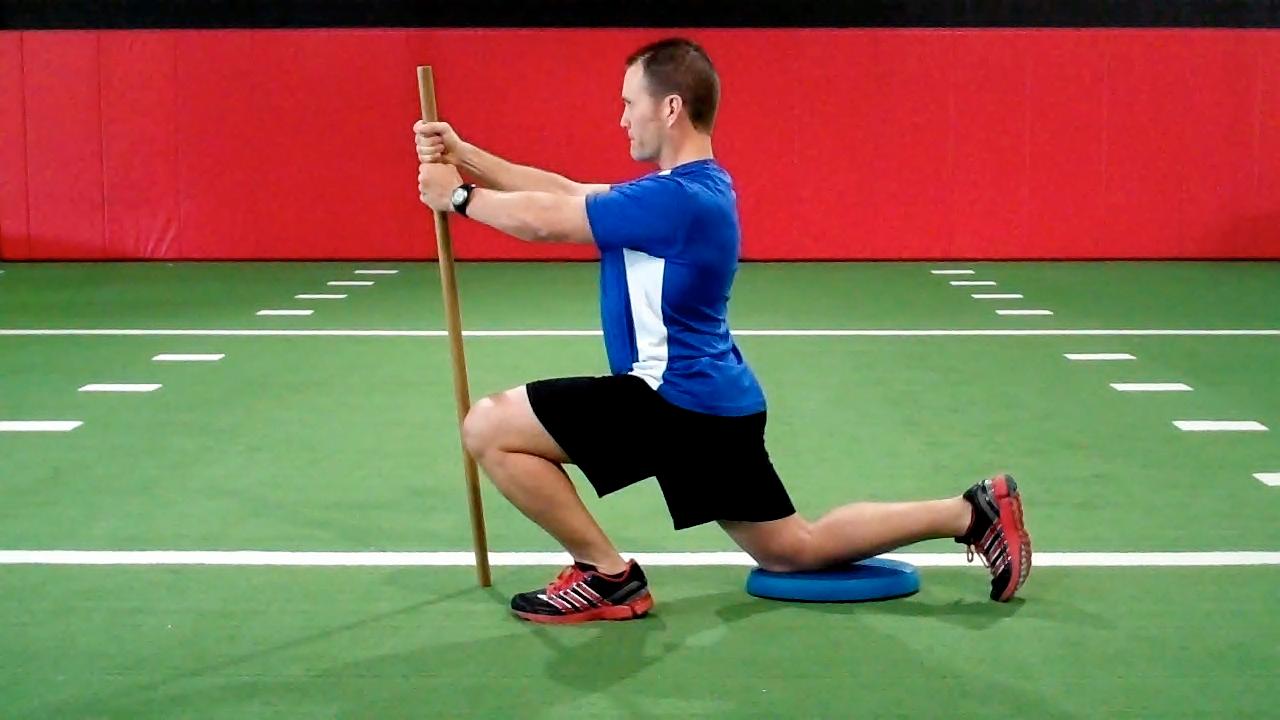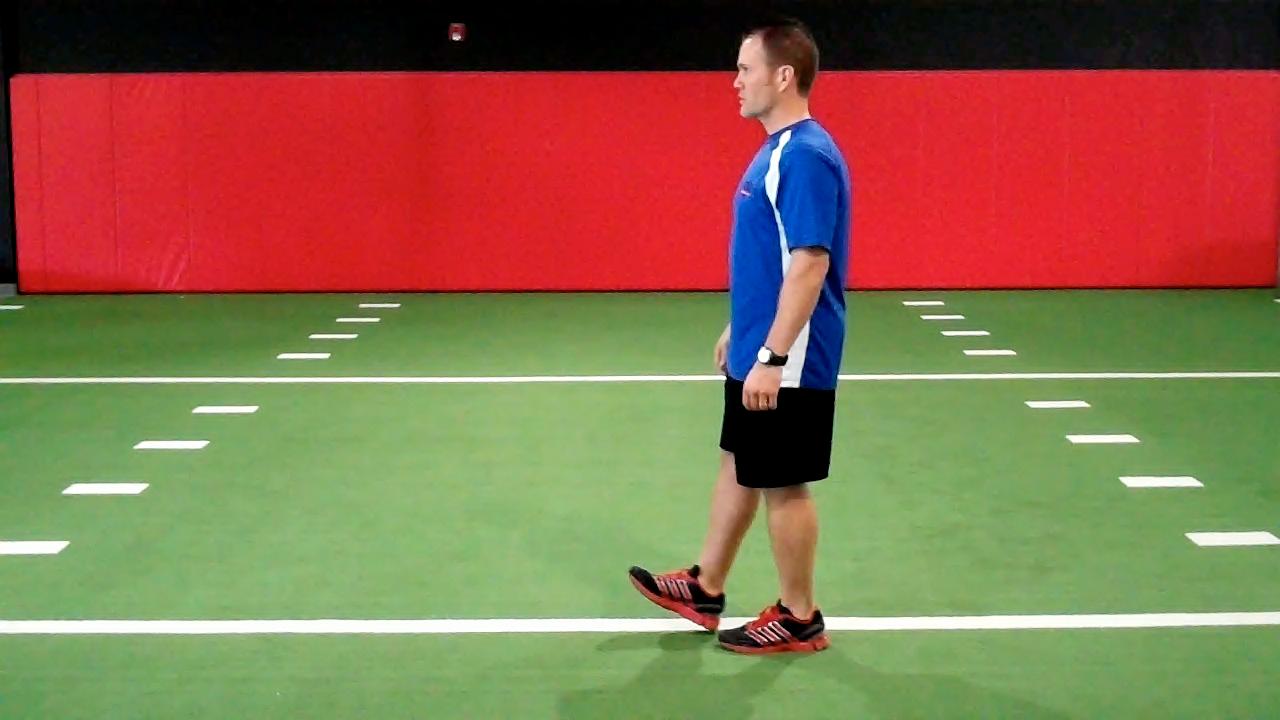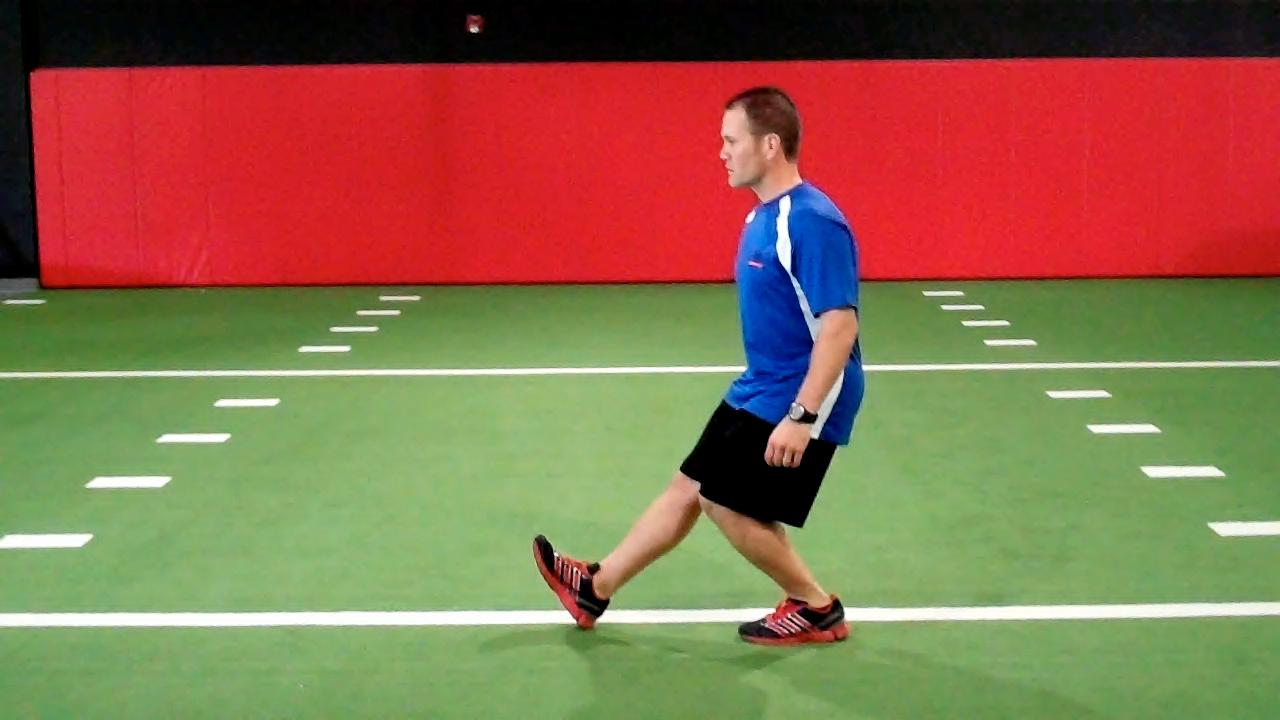
Brian turns his focus to ankle tightness in the first of a three-part series. This column offers two exercises to detect differences in the ankles.
See 'Related Resources' below for past Functionally Fits and other exercises and training tips.
In squatting and lunging the soleus is a major player as theknee and ankle flex more and more. A tight soleus leads to increased pronationoften setting off an undesirable chain reaction with bad lower extremitymechanics.
In this three-part series, I will address how to screen yourclients for limitations and review the exercises I use to facilitate normaldorsiflexion range of motion in the closed chain to optimize squatting, lungingand running mechanics.
The first step is assessing any differences or asymmetriesin ankle mobility. I prefer to assess this in the closed chain as that is whereyou will see the dysfunction manifested throughout the kinetic chain. I use thefollowing method to assess passive mobility/range of motion:
Execution:
Half-kneeling ankledorsiflexion
Half kneel with the back knee directly under the trailinghip and the front leg bent at 90 degrees (foot facing forward). Placing bothhands on a dowel and keeping the body upright, slowly lean forward allowing thefront knee and ankle to bend maximally while the front heel stays flat and theknee tracks over the second toe. Be sure to keep the trunk upright.
 | Once you cannot move further without compensation, measure the distance obtained by dropping from a straight line down from the mid patella to the floor and away from the toes. Repeat on the other side. |
To assess active or dynamic mobility, I prefer to use asingle-leg reaching activity. To better facilitate keeping the heel down, Ihave the client reach with the foot as opposed to the upper extremity asfollows:
Standing lowerextremity anterior reach
 |  |
Repeat this for three trials on each side and take the bestof the three trials. Repeat the same procedure on the other side.
Note:
These are screening tools designed to help youobserve asymmetry side-to-side. Tightness in the soleus or ankle joint complexwill dramatically affect closed chain kinematics and the forces imposed on theknee and hip. Additionally, it will promote faulty neuromuscular squatting,lunging, running and landing mechanics which thereby increase the risk oftraumatic and overuse injuries.
Ideally, you want to see clients achieve a minimum of 15-20degrees of dorsiflexion to help ensure optimal movement. Most clients that areable to achieve a full squat with good form will have closer to 25-30 degrees.
If the ankle joint is limited by scar tissue or jointtightness related to an injury, the client may need to see a rehab specialistfor appropriate joint mobilization/manual therapy. However, in many cases youcan improve motion with appropriate self mobilization, stretching andexercises.
In the next column, I will review some basic mobilizationand stretching exercises for unlocking the ankle.
Brian Schiff, PT, CSCS, is a licensed physical therapist,respected author and fitness professional. Currently, he serves as thesupervisor at the Athletic Performance Center in Raleigh, NC. Brian presentsnationally at several professional conferences and seminars on injuryprevention, rehab and sport-specific training. For more cutting edge traininginformation, subscribe to his monthly Training & Sports Medicine Update at www.BrianSchiff.com.
















